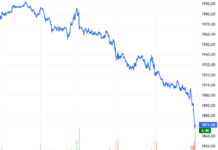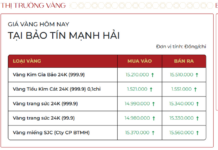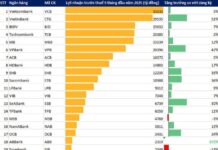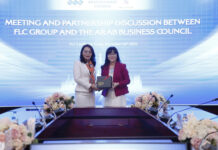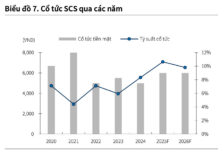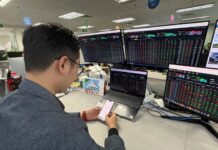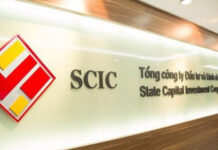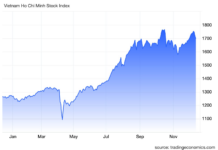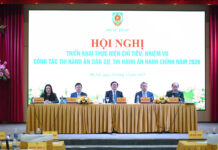Global Leader in Rice Production Seeks Financial Support for Sustainable Growth
At a recent workshop in Can Tho, “Promoting Credit for Key Agricultural Products, Driving the Mekong Delta’s Rapid and Sustainable Development,” Mr. Pham Thai Binh, Chairman of the Board of High-Tech Agriculture Joint Stock Company, shared insights into the challenges faced by the rice industry. He emphasized the need for long-term loans (7-10 years) for businesses to invest in machinery, services, milling, processing, and packaging within the rice value chain.
Mr. Binh highlighted the critical role of short-term loans in facilitating fresh rice purchases from farmers during harvest seasons, without which rice export businesses would struggle. He attributed the lack of long-term capital to the precarious practice of using short-term loans for long-term investments, a key factor in the absence of comprehensive value chain integration among rice enterprises.
According to Mr. Binh’s calculations, implementing the 1-million-hectare high-quality rice project requires long-term loans totaling VND 14,900 billion for fresh rice drying equipment, VND 18,200 billion for medium and long-term loans for dry rice silos, and approximately VND 15,000 billion for mechanization, milling, processing, and packaging infrastructure. The total investment needed over seven years is a modest VND 6,870 billion per year, or about USD 270 million.
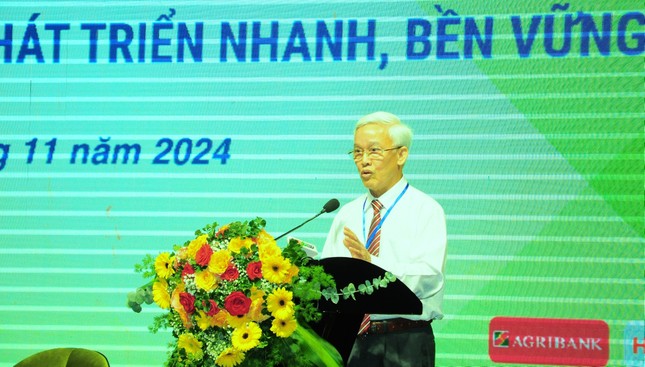
Mr. Pham Thai Binh, Chairman of the Board, High-Tech Agriculture Joint Stock Company. Photo: CK.
Mr. Binh also addressed the short-term loan requirements for fresh rice purchases from farmers, estimating a need for VND 49,000 billion. While banks have partially supported these loans for rice export businesses over the years, the current funding only covers a fraction of the value chain’s requirements. This funding gap has led to a situation where Vietnam’s rice industry, despite being a global leader, struggles with low value, unstable production, and export, and businesses are forced to compete by lowering prices to meet loan repayment deadlines.
Mr. Binh proposed a solution: banks should restructure their lending to provide sufficient funding for the entire value chain, enabling businesses to purchase all the rice from farmers and sell it at their discretion during export. This approach would eliminate the longstanding issue of farmers being pressured by middlemen and traders to sell their rice at low prices during harvest seasons, and businesses being forced to undercut each other to meet loan repayment deadlines.
The 1-Million-Hectare Rice Project: A USD 10 Billion Opportunity
Mr. Binh emphasized the immense potential of the 1-million-hectare rice project, stating that implementing it with proper value chain integration could generate over USD 10 billion in total revenue. In contrast, the current unlinked production approach yields only about USD 5 billion, resulting in a staggering USD 5 billion gap between the two production methods.
He based these figures on the real-world investments and experiences of his company and several other enterprises in the industry over the past few decades.

The 1-million-hectare rice project holds great expectations for the Mekong Delta’s rice industry. Photo: CK.
Mr. Binh also pointed out the disparity between the industry’s funding needs and the available capital. He suggested that banks, financial institutions, and the community provide long-term (7-10 years) and short-term (less than 12 months) loans totaling USD 4 billion. This amount is modest compared to the idle funds deposited in banks, estimated at VND 12 quadrillion (approximately USD 500 billion). Meanwhile, the rice value chain is projected to generate USD 10 billion in annual revenue, excluding proceeds from carbon credit sales.
Mr. Binh concluded with a stark warning: “If we continue with the status quo in the rice industry, Vietnam will lose out on approximately USD 5 billion each year due to the increasing global scarcity of rice caused by extreme climate change and the limited recovery capabilities of many countries.”
State Intervention: A Necessary Component for Success
Mr. Dao Minh Tu, Deputy Governor of the State Bank of Vietnam, affirmed that the Mekong Delta has never lacked bank capital. However, he pointed out several challenges from a macroeconomic perspective. The first is the inherent risk associated with agriculture and rural areas.
Mr. Tu cited the recent Storm No. 3, which caused significant losses for many farmers. The only available solutions were loan extensions or postponements, as debt forgiveness is not legally permitted. Debt restructuring depends on local authorities, but no region has declared a widespread “disaster situation” to implement debt restructuring policies for businesses, as it would impact local budgets.
“The Mekong Delta faced a similar situation with rice diseases, droughts, and saltwater intrusion, and we had to handle it in the same way,” Mr. Tu said. “Ultimately, the banking industry bears the brunt of these risks and must set aside risk provisions.”

SBV Deputy Governor Dao Minh Tu speaks at the workshop. Photo: CK.
Regarding the 1-million-hectare rice project, Deputy Governor Tu identified four sources of funding: government support for transportation and irrigation infrastructure and land improvement; World Bank loans (pending procedures); domestic and foreign investment (not yet available); and bank capital (for which the State Bank has provided guidance to commercial banks).
“This shows that the Mekong Delta still relies heavily on credit. While value chain integration in agricultural production remains limited, state intervention is necessary for the success of the 1-million-hectare rice project and value chain integration,” Mr. Tu concluded.
“Tailored Financial Solutions: NCB Supports Small Businesses This Holiday Season”
“The entry of the bank into the volatile market economy has given an added boost to individual customers and households, increasing their competitive edge and driving business growth in 2024. With their dynamic presence, the bank is empowering its clients to thrive in an ever-changing economic landscape.”

